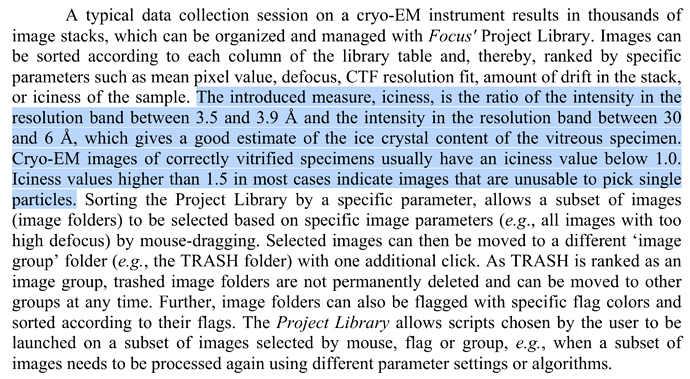Where can I get more information about the meaning of plots in the new patch-based CTF job (2.8.0)? Thanks.
PS: I misspoke when I asked about motion correction. That’s clear, but the green vertical lines and ice-thickness plots in patch-based CTF aren’t quite clear. Thanks.
Thanks @spunjani , but there’s no mention of the relative ice thickness plot and what to read from it, which I couldn’t understand!
Hi Reza,
I am guessing here, but looking at the “relative ice thickness” parameter it seems very similar to the “iciness” parameter introduced in Focus (https://www.biorxiv.org/content/biorxiv/early/2017/03/17/105452.full.pdf), and also IIRC from twitter discussions possibly being implemented in the next version of CTFFIND - @spunjani, can you confirm?
Cheers
Oli
Also - if I can add an additional question - what is the meaning of “knots” in the context of Patch CTF and Patch Motion? In context, it seems to mean patches - e.g. Patch CTF defaults to 3 knots in X and 3 in Y - is this more or less correct or is there a more specific meaning? I notice that Patch Motion defaults to 5 knots in Z - does this mean it is using a rolling window of 5 frames and interpolating shifts for the frames within that window?
Cheers
Oli
One more thing - unless I’m missing it, the “relative ice thickness” parameter doesn’t seem to be plottable in the exposure curation job.
This might be a useful parameter to have here, to allow users to easily test the exclusion of icy data.
Cheers
Oli
Not yet! But I would still be curious to know the answer too
Hi @olibclarke @ekellogg,
Relative ice thickness is similar to what is done in Focus - measuring the amount of power in the ice resolution band relative to the overall background.
The overall background unfortunately is highly sample/scope/setup dependant, making it hard to compare rel. ice thickness values across datasets. Within a dataset it’s pretty good for separating thin from thick ice. Thanks for pointing out that ice thickness is missing from exposure curation - we will add this.
Knots in patch motion and CTF are not actually patch sizes - generally more patches are used than the number of knots. The knots are parameters of the spatial and temporal smoothing - more knots means more degrees of freedom in each dimension.
